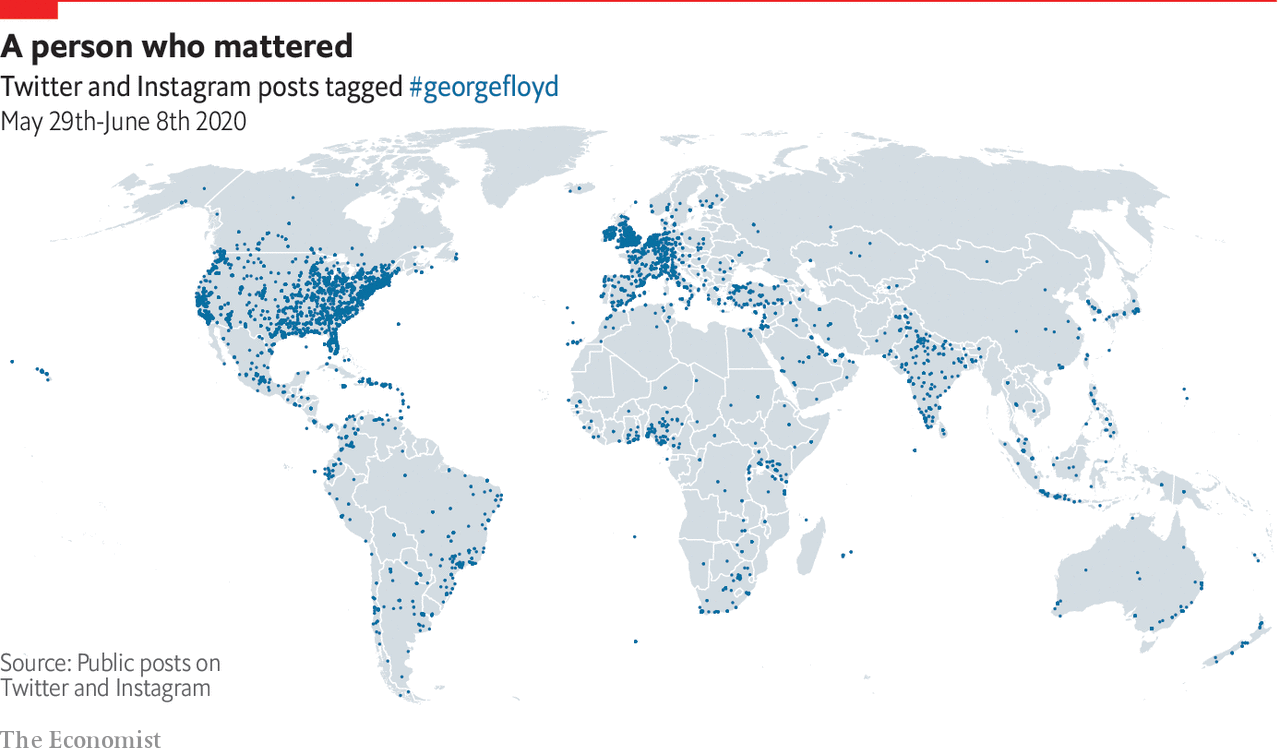
His death inspired a movement in America, and may do so elsewhere too
IT IS EASY to imagine a world in which the agony of George Floyd, a black man who was killed by a policeman in Minneapolis on May 25th, would have escaped public attention. More than 1,000 Americans die at the hands of police every year—many of them black and unarmed. In this sense, Mr Floyd’s experience is not unusual. But after a video emerged of the policeman kneeling on Mr Floyd’s neck, and was shared widely on social media, protests erupted first in Minneapolis, then across America and in cities worldwide.
Millions of tweets and Instagram posts have been published with the hashtag “#georgefloyd”. On Instagram alone, #georgefloyd has been used 2.3m times since his death two weeks ago—already nearly as often as #metoo (2.5m times since October 2017), which became a global rallying cry against sexual harassment and abuse. (Twitter does not make comparable data available.)
A tally by The Economist of about 450,000 Twitter and Instagram posts shows that Mr Floyd’s name has been invoked online in at least 140 countries across the world, from Colombia to Indonesia (see map), since May 29th. Even in China, where Twitter and Instagram are banned, users have expressed outrage on the social-media sites using the hashtag #georgefloyd, bypassing internet filters to do so.
The true extent of support for the protest movement is probably even larger than these figures would suggest. Is this the beginning of an international movement? On the one hand, it is easy for many to embrace the objectives of the campaign, which include an end to racism and police brutality, problems that are not exclusive to America. Protests have taken place as far apart as Paris and Rio de Janeiro. Smartphones and social media make it easier not only to voice an opinion but also to organise action, at home and across national borders. Even in the days before social media, transnational networks linking groups in many countries played an important role in efforts to right wrongs, such as apartheid in South Africa and, before that, women’s disenfranchisement. Now, the reach and immediacy of technology make them even more powerful.
On the other hand, posting on Twitter and Instagram may not translate into action on the ground. Many of the countries in which George Floyd’s name has been invoked in recent days are run by authoritarian governments that do not tolerate grassroots political action. What is more, the pandemic makes protest difficult, and perhaps dangerous. Whether the Black Lives Matter movement in America continues to inspire action elsewhere also depends on its progress at home. But for now, at least, Mr Floyd’s cry “I can’t breathe” has served as a rallying call for countless people who feel they, too, are stifled by their policemen and rulers.

